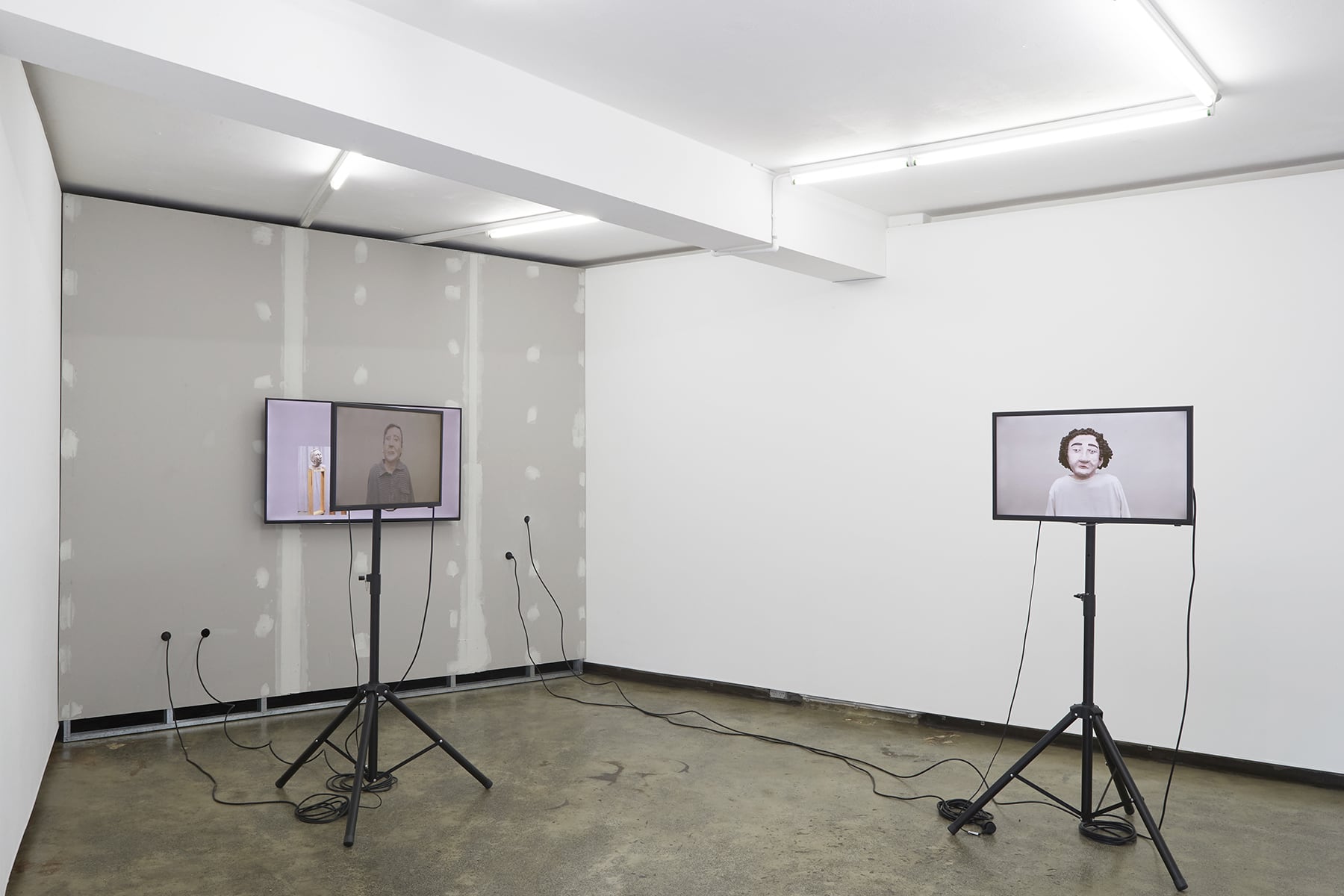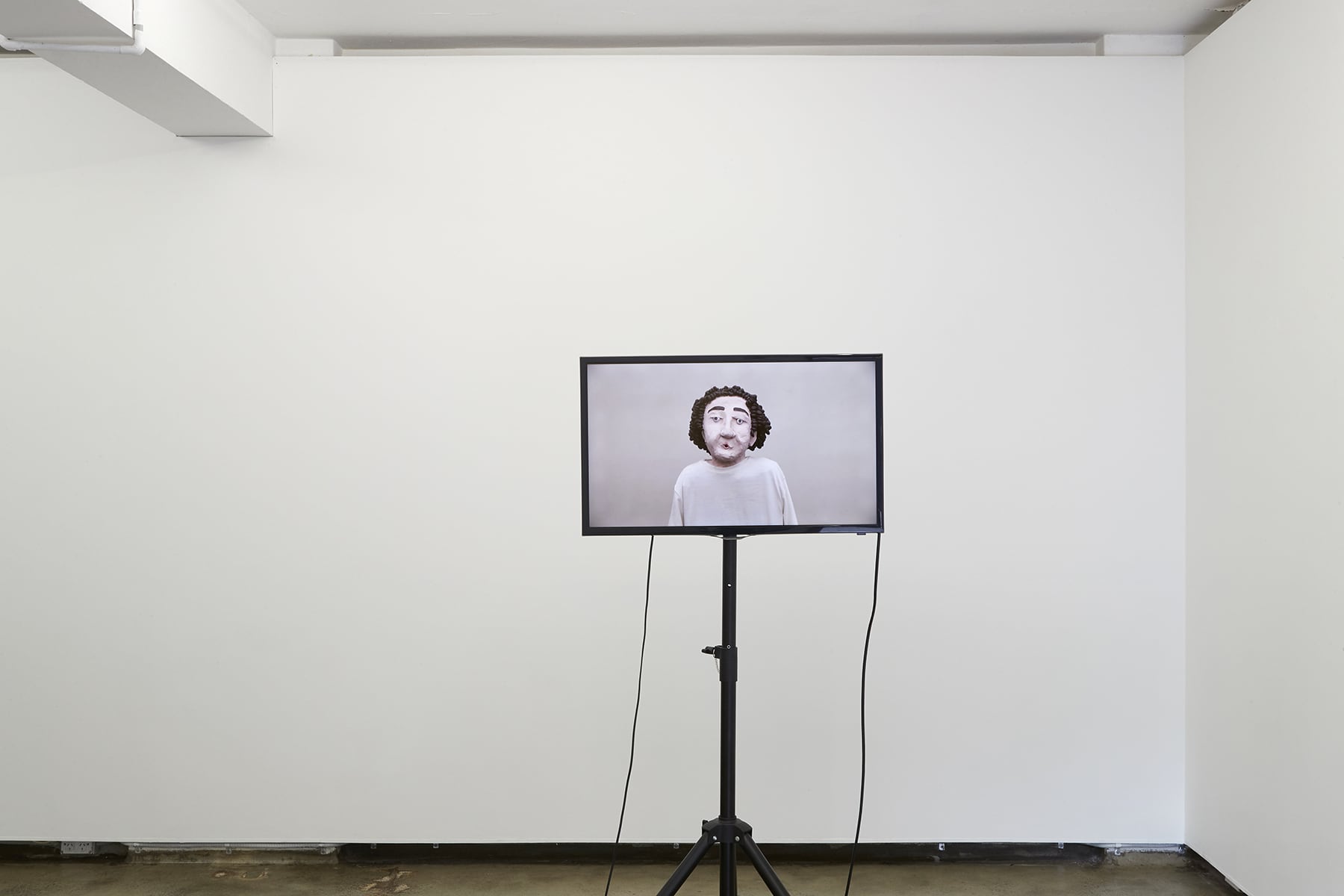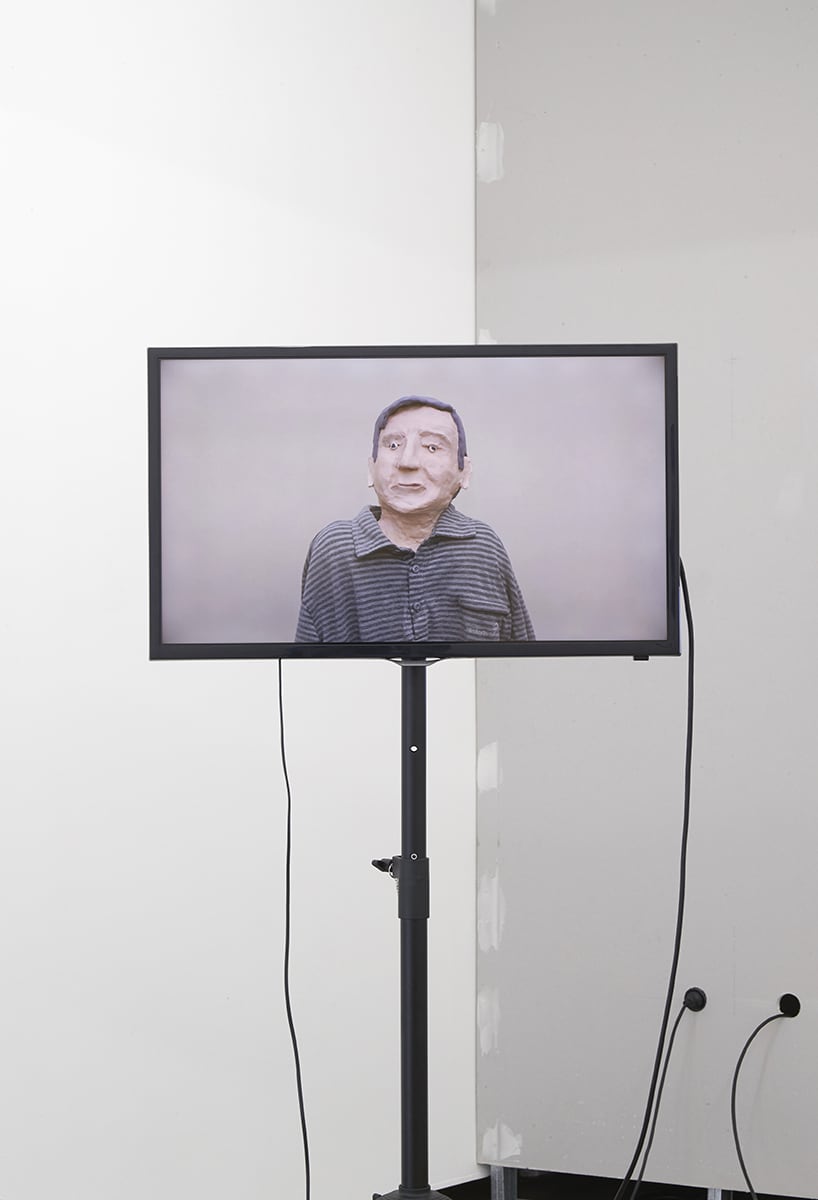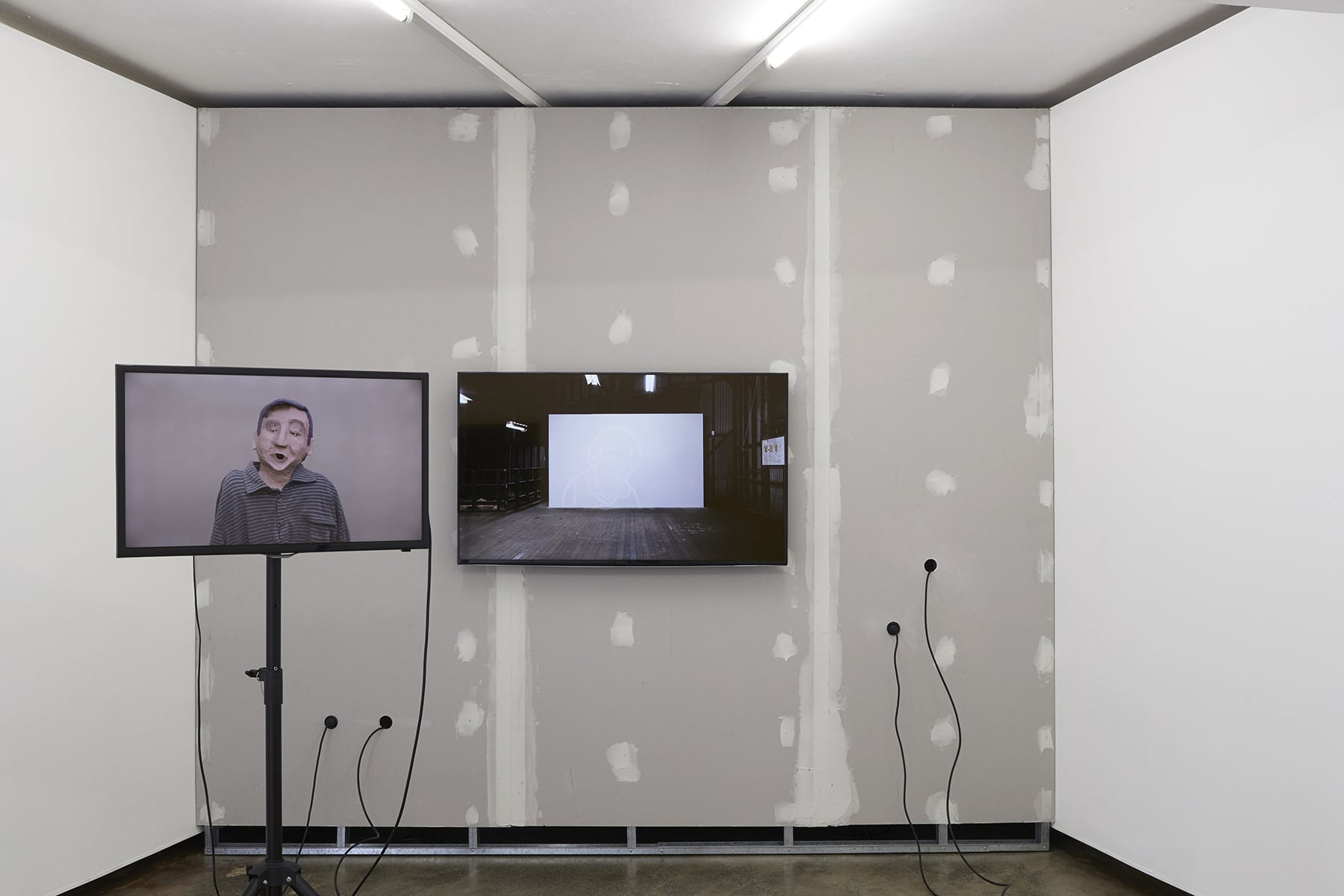



Artist: Sarah Poulgrain
Conversation in Two Parts is Sarah Poulgrain’s most personal work to date; or at least that’s what the pop critic inside me wants to exalt. In truth, the work left me feeling isolated from the artist. To be clear, I am not preparing you for a hatchet job review on the exhibition; I thoroughly enjoyed my experience with this work – it is an overall technical achievement in crude dynamism. But considering the work levels itself so intently on displaying the artist’s emotional process it is surprising that she, as a protagonist, always seem so elusive.
Mood was the strongest touchstone of Conversation in Two Parts. Through a combination of animation works, sound design and the skewing of the mise en scène of the art gallery, the artist created a space that was undoubtedly impactful at an affective level.
Upon entering the gallery space, I was met by two freestanding screens. Each showed a hand-built clay bust, one masculine and the other feminine, digitally animated to blink and groggily bop their heads along to the soundtrack. A third screen was mounted on an exposed gyprock wall, which itself was erected on a metal frame and positioned in the middle of the gallery, effectively cutting the floor space in half. This screen displayed a series of vignettes cutting between various busts in the artist’s mode, along with other, more ambiguous, shots.
The screen display and its subjects are hard to place methodologically, but the use of vignettes allowed the presentation of a non-linear narrative about development, and beings in progress. While these elements hint at practices of construction and re-construction, the device that does the most to establish the overall tone of this as a single work is the exhibition’s soundtrack. Through a whispery keyboard arrangement interspersed with sung notes and murmurs, the audio emphasised a melancholy disposition across each exhibition element. The longer I spent with the work, the more the combination of the sleepy animation, haphazard construction and pulsing soundtrack transported me from a physical space into a headspace.
Conversation in Two Parts is one of those viewing experiences that feels personal, in that it appears to rely heavily on key reference points. But I didn’t get the references. It felt like the narrative would just reveal itself if only I had a few more hints. But maybe that’s the point; we are in Poulgrain’s head and it’s still hard to lock her down.
In her exhibition statement, Poulgrain indicated that the show "aims to problematise the role of internal and external authoritative voices in the process of subjectification". Fittingly, the work, in and of itself, never makes clear the distinction between source material and its adaptations, truth and re-enactment. The ‘performed amateurism’1 of Poulgrain’s style adds yet another layer of ambiguity, further blurring the distinction between the presentation of the internal and external. In her text, Poulgrain repeatedly refers to the exhibition as an opportunity to apply a new kind of criticality to shame, offering "alternative and imagined outcomes that consolidate experiences of shame with methods for self-empowerment". But shame in, or of, what is never apparent. What the exhibition statement makes clear is that Poulgrain is her own jumping off point. But I don’t know the artist and this show doesn’t really unveil anything about her. So where does that leave me?
Conversation in Two Parts is at once opaque and alluring. With its charming aesthetic, it brilliantly and critically illuminates the language of the internal. The show left me with that feeling of simultaneously knowing and not-knowing someone. Like meeting a stranger and navigating the slow process of becoming familiar with their idiosyncrasies. It is easy to feel bewildered by this exhibition, yet if you are willing to be open to falling into a stranger's emotional melody, and the attendant strange joys, it is a rewarding experience.
Luke Letourneau is the coordinator of Kudos Gallery, a board member of Runway Experimental Art Journal and an emerging curator based in Sydney.
